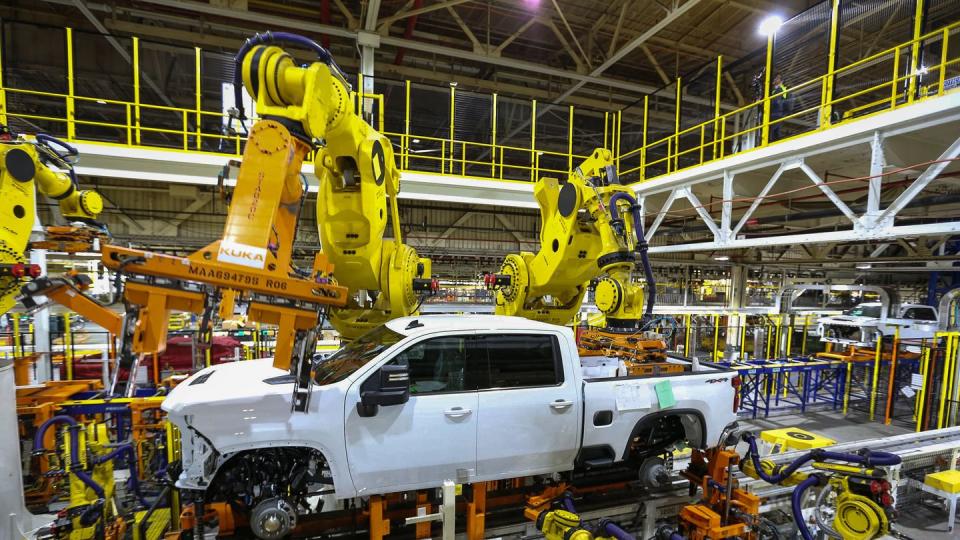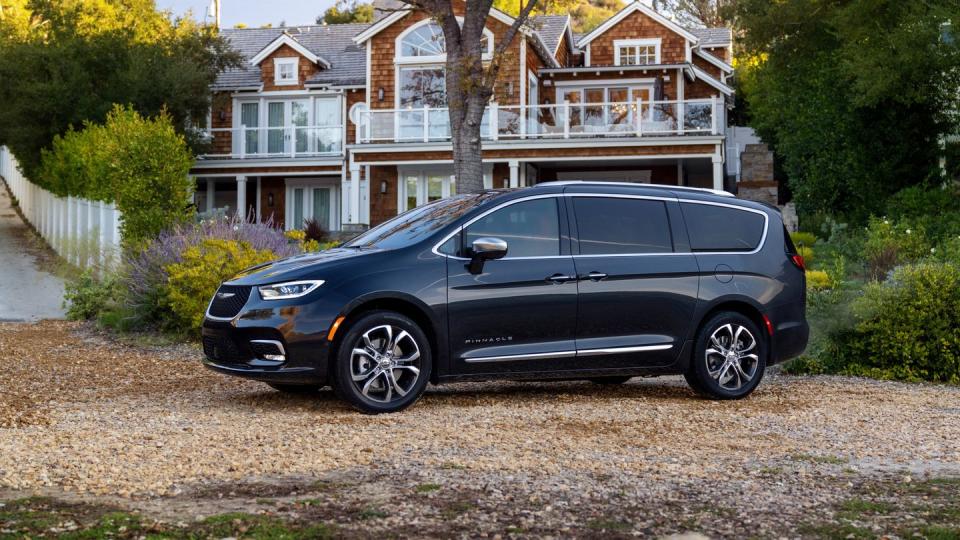Vehicle Sales Are Up This Year While EV Prices Are Falling

Cox Automotive expects September’s sales volume to reach an annual rate near 15.5 million at 1.28 million for the month, up from August’s 15-million seasonally adjusted annual rate.
Cox also is sticking with its forecast of 1 million electric vehicle sales for the year, about 8% of the total market.
UAW stand-up strikes against General Motors and Stellantis parts warehouses will probably make it difficult to fix the car or truck you already own.
Now is a good time to find the new car or truck of your choice, so long as you have good credit and strong income, and the UAW strike against Detroit automaker is not likely to affect inventory unless no labor contracts are signed before Thanksgiving.
Those are key takeaways from Cox Automotive’s third-quarter sales forecast and industry insights presented this week.
The United Auto Workers’ three-way strike, high interest rates, and affordability are three main issues to watch, said Jonathan Smoke, Cox Automotive’s chief economist.
The industry is “moving into a much more predictable future,” Smoke said. The UAW strike, he said, will “not have much effect” on September sales.
Cox Automotive expects September’s sales volume, officially reported by automakers next week, to reach an annual rate near 15.5 million at 1.28 million for the month, up from August’s 15-million seasonally adjusted annual rate (SAAR) and a big hike from September 2022’s annual level of 13.6 million.
“As the first three quarters of 2023 come to a close, ‘pleasantly surprised’ may be the sentiment of many auto analysts,” said Charlie Chesbrough, Cox Automotive’s senior economist.

Cox forecasts US sales will total 15.3-15.4 million vehicles for all of 2023, well above the 14.1-million level the firm prognosticated at the beginning of the year. Cox also is sticking with its forecast of 1 million electric vehicle sales for the year, about 8% of the total market, said Stephanie Valdez-Streaty, Cox director of industry insights.
Despite some reports mid-year that EV sales were starting to stumble, there has been “linear growth in sales … exponential growth in availability,” Valdez-Streaty noted.
Third-quarter EV inventory reached 97 days’ supply, versus 57 days for Q3 of 2022. This shows up in the average price of a new EV, which was $53,376, compared with $57,772 at the beginning of January 2021. Tesla’s average transaction price dropped to $54,943, from $57,510 at the beginning of ‘21.
Cox reports the Tesla Model Y is the best-selling SUV in the US year-to-date, with 270,464 delivered (up 58%), ahead of Toyota RAV4 (264,733, down 2%) and Honda CR-V (227,785, up 46%).
Tesla’s Model 3 sedan was the second best-selling passenger car, behind Toyota Camry and ahead of Honda Accord.
Much of the year’s industry gains so far come from fleet sales, with automakers restocking rental companies. Rental vehicle deliveries are up 62.2% for the year, though still well below pre-pandemic levels. Commercial fleet sales are up 40.5%.
New vehicle purchases are up 6% and leases are up 3.4%, Cox reports.
More urgently, the UAW stand-up strike against General Motors and Stellantis parts warehouses will probably make it difficult to fix the car or truck you already own. Parts inventories are still below 2019 levels, Cox says, while parts and service—historically half a dealership’s annual profit—are already much pricier since the pandemic.
Fleet sales could fall by the last couple of months of the year as GM, Ford, and Stellantis cancel rental deliveries to stock up on retail vehicles if the UAW strike grinds on.
That’s because the Detroit Three have been stockpiling dealer inventory in anticipation of the strike deadline. Dodge and Chrysler have the industry’s highest inventories, about 120 days each, followed by Lincoln and Jeep.

“All year long, it was assumed Stellantis would be the (strike) target,” before the UAW’s “stand-up” strike strategy against all three was revealed, but all three Detroit automakers have been squirreling away inventory, Chesbrough said.
“It could be well into November” before Detroit Three dealers run short on key models, he said, because Stellantis and GM could cut back on fleet sales and sell those vehicles to retail customers, instead.
This also translates into more pressure on prices, as incentives that started to trickle upward this year start to diminish, Smoke said.
Internal-combustion-powered vehicles were sold at an average transaction price of $48,051 in the third quarter, which is just $5325 less than the price of a new EV. Interest rates for August-September averaged 9.61% for a brand-new vehicle and 14.03% for a used vehicle, Cox reports. About 50% of households can afford no more than a $400 monthly payment.
Average monthly payments on a new-vehicle loan is $770. Average new vehicle lease is $586 per month, and the average used-car loan is $592 per month.
While used vehicle prices have eased from inflated values of the last couple years, supply of used vehicles is now at 2021 levels, down 10% from last year.
Cox analysts said this dwindling supply is pushing that lower 50% of households—especially subprime consumers—out of the replacement vehicle market altogether. The market’s strength is coming from the upper-half of the consumer market and—like the housing market—many of these well-off consumers are paying cash.
Not said but inferred is that if new and used vehicle prices trend back up, it could drive the Consumer Price Index well above the Federal Reserve’s 2% target, forcing up interest rates on new and used vehicles to widen the gulf between lower- and upper-halves.
Do EV prices need to fall further before you will seriously consider buying one? If so, how much further? Please comment below.

 Yahoo Autos
Yahoo Autos 